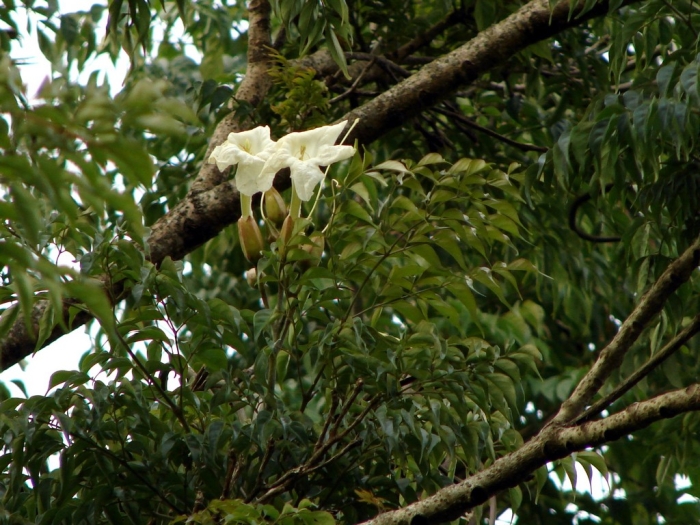China Doll
(Radermachera sinica)
China Doll (Radermachera sinica)
/
/

Tatters ❀ from Brisbane, Australia
CC BY 2.0
Image By:
Tatters ❀ from Brisbane, Australia
Recorded By:
Copyright:
CC BY 2.0
Copyright Notice:
Photo by: Tatters ❀ from Brisbane, Australia | License Type: CC BY 2.0 | License URL: https://creativecommons.org/licenses/by/2.0 | Uploader: Uleli | Publisher: Wikimedia Commons | Title: Radermachera_sinica_-_"China_Doll_tree"_(3_photos)_(4400613119).jpg | Notes: User created page with UploadWizard |




















Estimated Native Range
Summary
Radermachera sinica, commonly known as China Doll, is an evergreen tree native to the subtropical mountain forests of southern China and Taiwan. It can reach heights of up to 30 meters with a trunk diameter of 1 meter in its natural habitat, but when grown indoors, it typically remains much smaller, around 3 meters. The China Doll plant has a graceful, upright form with glossy, dark green, bipinnate leaves that have a feathery appearance. Its white, trumpet-shaped flowers are about 7 cm long, resembling those of Bignonia or Catalpa, and are highly fragrant. These night-blooming flowers appear from spring to early summer, wilting in the morning sun, and are quite showy, although they rarely bloom indoors.
The China Doll plant is valued for its lush, attractive foliage and is commonly used as a houseplant or patio plant. It is also suitable for outdoor planting in tropical to subtropical regions, as well as areas with a Mediterranean climate. In cultivation, it requires a position with indirect sunlight and protection from drying winds and frost, which it cannot tolerate. The plant prefers rich, well-drained soil and does best with medium amounts of water, in full sun to part shade. While it is generally easy to maintain, it can be sensitive to overwatering and may suffer from root rot if drainage is poor. Additionally, it can be prone to mealybugs and spider mites, especially when grown indoors.CC BY-SA 4.0
The China Doll plant is valued for its lush, attractive foliage and is commonly used as a houseplant or patio plant. It is also suitable for outdoor planting in tropical to subtropical regions, as well as areas with a Mediterranean climate. In cultivation, it requires a position with indirect sunlight and protection from drying winds and frost, which it cannot tolerate. The plant prefers rich, well-drained soil and does best with medium amounts of water, in full sun to part shade. While it is generally easy to maintain, it can be sensitive to overwatering and may suffer from root rot if drainage is poor. Additionally, it can be prone to mealybugs and spider mites, especially when grown indoors.CC BY-SA 4.0
Plant Description
- Plant Type: Tree
- Height: 25-30 feet
- Width: 15-25 feet
- Growth Rate: Moderate
- Flower Color: Yellow, White
- Flowering Season: Summer
- Leaf Retention: Evergreen
Growth Requirements
- Sun: Full Sun, Part Shade
- Water: Medium
- Drainage: Medium
Common Uses
Bee Garden, Bird Garden, Butterfly Garden, Fragrant, Hedges, Hummingbird Garden, Low Maintenance, Potted Plant, Showy Flowers, Street Planting
Natural Habitat
Subtropical mountain forests of southern China and Taiwan
Other Names
Common Names: Serpent Tree, Emerald Tree, Rumsask
Scientific Names: , Radermachera sinica, Radermachia sinica, Stereospermum sinicum, Radermachera borii, Radermachera tonkinensis,
GBIF Accepted Name: Radermachera sinica (Hance) Hemsl.